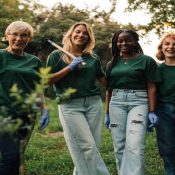
Celebrating Women’s Impact: Stories That Inspire and Transform?
Why History Matters
The women in Connecticut were able to facilitate national suffrage and other reforms. Their accomplishments shed light on the manner in which national results are determined by the local action. Their organization, lobbying and leadership within the civil society expanded voting rights, education, health facilities and labor protection, which formed the basis of continued civic engagement.
Inclusive Narratives
Leaders of different races and classes have a role to play in Connecticut. The African American suffragists and reformers also demanded gender and racial equality. Female immigrants were organized in factories and neighborhoods. It concentrates on various experiences, and this aspect of the narrative speaks to the actual civic essence of the state and provides some trends on how to be inclusive in leadership in our contemporary times.
Education into Engagement
In Connecticut, lectures and debates were given in clubs, settlement houses and civic associations, women were taught the parliamentary process and were trained on how to serve the people. This tradition is still upheld by current public libraries, universities, and historical societies with exhibits, workshops, and local dialogues combating the representation of local past and heritage in present-day voting and policy participation.
From Story to Action: Turning Insight into Impact
Leadership as a Practice
- As a practical example of coalition building, Katherine Houghton Hepburn was a proponent of suffrage and subsequently reproductive health.
- Mary Townsend Seymour, the co-founder of the NAACP branch in Hartford, also associated labor rights and racial justice with the political authority of women.
- Josephine Day Bennett maneuvered endlessly around the suffrage and social reform, converting protest into policy victories.
- They were led by common traits: long-term persistence, transitional vision of cross issues, and the boldness to involve institutions combined with the mobilization of communities.
Their leadership shared traits: persistence, cross-issue vision, and the courage to engage institutions while mobilizing communities.
Historic Sites as Classrooms
The archives and historic homes as well as civic landmarks in Connecticut serve movement classrooms. Tactics: petition drives, legislative testimony and newspaper campaigns are put in perspective by walking tours and museum programs. Through the study of meeting minutes, pamphlets and flyers, contemporary activists can understand the role of disciplined messaging and involvement of the local press in influencing the public opinion.
Building Sustainable Movements
Votes For Women CT is an ideal example of sustainability in commemoration: the organization processes narratives and puts less-known people in the limelight and relates success stories to the present involvement- voter registration programs, civic education, and student leadership. These are the practices that have continued to gather momentum through the act of remembrance.
Practical Steps Today
- Register, verify and vote on local and state elections.
- Join historical organizations in the process of digitizing and sharing materials about the suffrage-era.
- Poverty reduction Privatization, partner up with youth civic educational programs to couple history with skills education (public speaking, media literacy).
- Community dialogue by the host community between the history of past campaigns and the present concerns of voting access, equitable education, and community health.
FAQs
Who are some pivotal Connecticut figures tied to women’s achievements?
Examples of leaders are: Katherine Houghton Hepburn, Mary Townsend Seymour, Josephine Day Bennett, and more grassroots organizers who made their neighborhood initiatives and their places of work which provided long-term civic benefits.
How does learning CT suffrage history help today?
It offers proven strategies of veterans – alliances, legislative action and media outreach, and demonstrates the way local action transforms state and national policy.
What can communities do to keep this legacy alive?
Fund civil society activities, institutionally affirm women history, and establish mentorships among experienced and young leaders.




